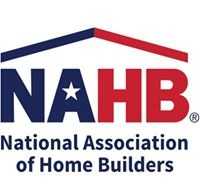WASHINGTON, D.C. (February 14, 2019) — (RealEstateRama) — A modest increase in interest rates offset a slight decline in home prices to keep housing affordability essentially level in the fourth quarter of 2018 and still hovering at a 10-year low, according to the National Association of Home Builders (NAHB)/Wells Fargo Housing Opportunity Index (HOI) released today.
In all, 56.6 percent of new and existing homes sold between the beginning of October and end of December were affordable to families earning the U.S. median income of $71,900. This is little changed from the 56.4 percent of homes sold in the third quarter that were affordable to median-income earners.
The national median home price moved down from $268,000 in the third quarter of 2018 to $263,000 in the fourth quarter. At the same time, average mortgage rates rose by 17 basis points in the fourth quarter to 4.89 percent from 4.72 percent in the third quarter. This was the fourth straight quarterly rate hike and the highest rate level since the second quarter of 2011.
“Builders are finding it increasingly difficult to build at price points most consumers need because they are struggling with burdensome regulations, higher material costs and shortages of lots and labor,” said NAHB Chairman Randy Noel, a custom home builder from LaPlace, La. “Historically, housing has been the canary in the coal mine, and these ongoing affordability woes should serve as a wake up call to policymakers to take immediate action.”
“While solid job growth and rising household formations are fueling a demand for housing, home price appreciation has outpaced wage gains, putting a damper on housing affordability,” said NAHB Chief Economist Robert Dietz. “To keep housing moving forward, policymakers at all levels of government should make it a priority to address affordability concerns that are hurting home buyers and home builders alike.”
Youngstown-Warren-Boardman, Ohio-Pa. supplanted Syracuse, N.Y. as the nation’s most affordable major housing market. There, 92.7 percent of all new and existing homes sold in the fourth quarter were affordable to families earning the area’s median income of $60,100. Meanwhile, Cumberland, Md.-W.Va. was rated the nation’s most affordable smaller market, with 94.9 percent of homes sold in the fourth quarter being affordable to families earning the median income of $55,500.
Rounding out the top five affordable major housing markets in respective order were Scranton-Wilkes Barre-Hazleton, Pa.; Syracuse; Indianapolis-Carmel-Anderson, Ind.; and Toledo, Ohio.
Smaller markets joining Cumberland at the top of the list included Kokomo, Ind.; Wheeling, W.Va.-Ohio; Davenport-Moline-Rock Island, Iowa-Ill.; and Elmira, N.Y.
San Francisco, for the fifth straight quarter, was the nation’s least affordable major market. There, just 6 percent of the homes sold in the fourth quarter of 2018 were affordable to families earning the area’s median income of $116,400.
Other major metros at the bottom of the affordability chart were located in California. In descending order, they included Los Angeles,-Long Beach-Glendale; Anaheim-Santa Ana-Irvine; San Jose-Sunnyvale-Santa Clara; and San Diego-Carlsbad.
All five least affordable small housing markets were also in the Golden State. At the very bottom of the affordability chart was Santa Cruz-Watsonville, where 8.5 percent of all new and existing homes sold were affordable to families earning the area’s median income of $81,400.
In descending order, other small markets at the lowest end of the affordability scale included Salinas; San Luis Obispo-Paso Robles-Arroyo Grande; San Rafael; and Napa.
Please visit www.nahb.org/hoi for tables, historic data and details.
Editor’s Note: The NAHB/Wells Fargo Housing Opportunity Index (HOI) is a measure of the percentage of homes sold in a given area that are affordable to families earning the area’s median income during a specific quarter. Prices of new and existing homes sold are collected from actual court records by Core Logic, a data and analytics company. Mortgage financing conditions incorporate interest rates on fixed- and adjustable-rate loans reported by the Federal Housing Finance Agency.
CONTACTS
Elizabeth Thompson
202-266-8495







